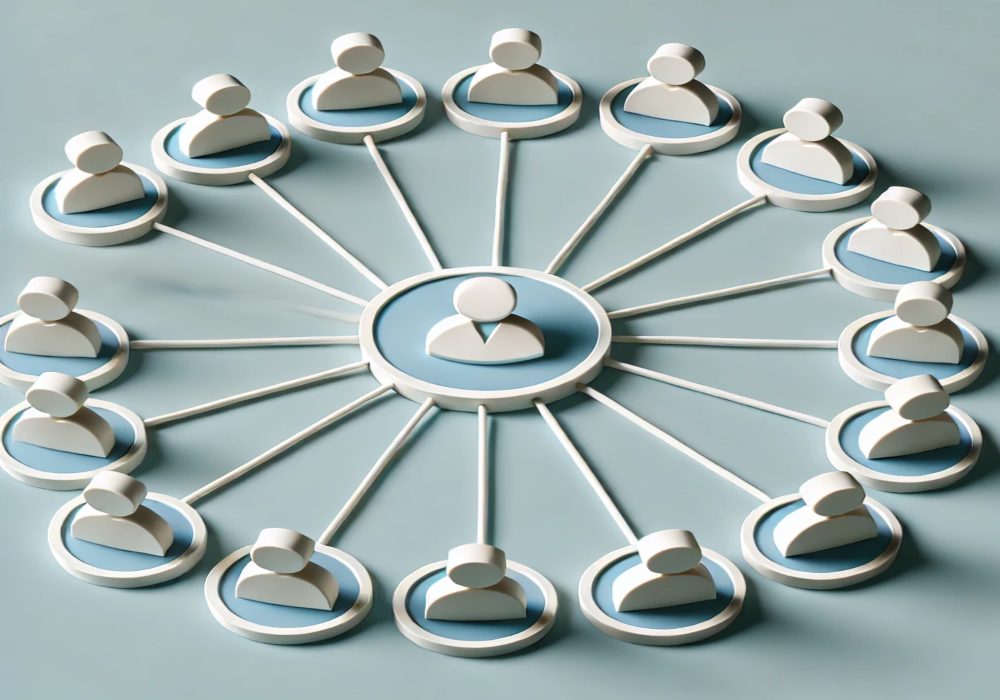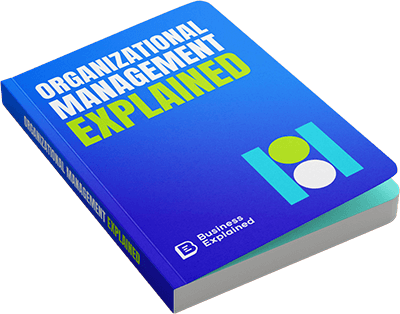Table of Contents
- Centralization and Decentralization Definition
- Centralized and Decentralized Organizational Structure Advantages and Disadvantages
- Centralized and Decentralized Organizational Structure Examples
- Centralized VS Decentralized Organizational Structures – How to Pick the Best One
- Hybrid Organizational Structures – Combining the Best of Both Worlds
In modern business, organizational structures shape how companies operate, communicate, and make decisions. Choosing between centralized and decentralized structures can substantially impact a company’s adaptability, efficiency, and innovation.
This blog will explore the core differences, advantages, disadvantages, and practical examples of centralized and decentralized organizational structures to guide readers in selecting the most suitable model for their organization.
Centralization and Decentralization Definition
Centralization and decentralization represent two ends of the organizational structure spectrum. Understanding these definitions is key to evaluating which structure best aligns with an organization’s goals, culture, and operational style.
Centralization and Decentralization in Organizational Structure
Centralization is an organizational structure where decision-making authority is concentrated at the top levels of management. In a centralized structure, decisions are typically made by a select few individuals, often executives or senior management, allowing for uniformity and control across the organization. This approach is common in larger, well-established companies where consistency and a top-down approach are essential for maintaining control.
In contrast, decentralization disperses decision-making power throughout different levels of the organization, granting more autonomy to managers and teams in various departments or locations. Decentralized structures are often seen in companies looking to encourage creativity, faster decision-making, and adaptability to regional or departmental needs. This approach fosters innovation and can improve employee morale by empowering individuals at all levels.
Both structures offer unique benefits and challenges, as detailed below.
You can learn more about this subject in our e-book Organizational Management Explained, which also provides a comprehensive overview of organizational management and its various components, exploring different structures, theories, management styles, and strategic practices essential for effective leadership and operations within organizations
Centralized and Decentralized Organizational Structure Advantages and Disadvantages
The choice between centralized and decentralized organizational structures comes with distinct advantages and disadvantages, each impacting a company’s control, efficiency, and adaptability in different ways. This section explores the key benefits and potential drawbacks of both structures to provide a comprehensive understanding of their implications for businesses.
Advantages of Centralized Organizational Structure
- Consistency and Standardization – Centralization fosters a high level of consistency in decision-making and policy application across the organization. Decisions from a central authority create uniform practices, which are beneficial in industries like healthcare or finance, where adherence to strict protocols is essential.
- Reduced Overhead Costs – A centralized structure often reduces operational costs. By consolidating administrative functions and streamlining decision-making processes, organizations can avoid redundant roles, minimize expenses, and improve overall efficiency. This structure is particularly beneficial for companies seeking cost-effective strategies, especially in competitive markets.
- Strong Leadership and Control – In a centralized model, leaders maintain tighter control over the company’s direction and resources. This is especially advantageous in crises, where quick, decisive actions are required. Companies with centralized decision-making were able to respond to economic shifts faster than their decentralized counterparts.
Disadvantages of Centralized Organizational Structure
- Slower Decision-Making – With decision-making authority concentrated at the top, organizations may experience delays in addressing issues. This can hinder responsiveness to market changes, customer needs, or operational challenges, particularly in fast-paced industries like technology or retail.
- Reduced Employee Engagement – Centralized organizations can inadvertently discourage employee initiative and engagement by limiting their decision-making power. Employee engagement and empowerment have a direct link to productivity and job satisfaction. When employees feel detached from decision-making, overall morale and productivity may decline. Learn more on the subject from our e-book Employee Engagement Strategies Explained!
- Inflexibility – A highly centralized structure may struggle to adapt to rapid changes in the market or industry. As a result, this rigidity can hinder an organization’s ability to innovate or respond to new challenges effectively, which is a disadvantage for companies competing in dynamic industries like tech and e-commerce.
Advantages of Decentralized Organizational Structure
- Faster Decision-Making – Decentralized organizations empower managers and employees at various levels to make decisions, allowing for faster responses to issues. This autonomy is especially advantageous in dynamic industries or regions with unique needs. For example, Procter & Gamble credits its success in global markets to a decentralized approach that empowers regional managers.
- Employee Empowerment and Morale – When employees are granted decision-making authority, they are more likely to feel valued and engaged. This autonomy can increase job satisfaction and boost morale, leading to a more committed and productive workforce.
- Adaptability – Decentralized structures enable organizations to respond swiftly to market changes and regional trends. Localized decision-making allows companies to tailor strategies and solutions to specific needs, which can be a powerful competitive advantage in diverse markets.
Disadvantages of Decentralized Organizational Structure
- Increased Operational Costs – Decentralization may lead to redundant functions across departments, increasing operational costs. For example, a company may require multiple human resources teams or marketing strategies for each region, which can strain resources if not managed carefully.
- Challenges with Consistency – Decentralized companies can experience inconsistencies in processes, policies, and branding. Without a unified approach, customers may encounter different experiences or messaging, potentially leading to confusion or dissatisfaction.
- Coordination Difficulties – With many departments operating independently, a decentralized structure can present coordination challenges. Ensuring that all parts of the organization are aligned with the company’s goals requires strong communication and a strategic approach to avoid conflicts and confusion.
Centralized and Decentralized Organizational Structure Examples
Examining real-world examples of centralized and decentralized organizational structures provides insight into how these models function in practice.
Centralized Organizational Structure Example
McDonald’s
McDonald’s is a prime example of a centralized organizational structure. Decisions, policies, and processes are primarily determined at the corporate level and then standardized across its franchises worldwide. This centralization ensures consistency in product quality, service, and customer experience across locations. McDonald’s success in achieving operational efficiency on a global scale is often attributed to its centralized approach.
Apple Inc.
Apple follows a centralized approach where key decisions regarding product development, marketing, and strategy come directly from its headquarters. This structure allows Apple to uphold its high standards for design and innovation across all products, creating a unified brand identity and user experience worldwide. Apple’s centralization has contributed to its success in maintaining brand consistency.
Tesla
Tesla’s centralized structure allows for rapid decision-making at the executive level, particularly driven by the vision of its CEO, Elon Musk. From product innovations to market strategy, Tesla’s centralized model has helped it quickly adapt to the fast-paced automotive and technology sectors. This structure also ensures that product quality and design align with Tesla’s high standards.

Decentralized Organizational Structure Example
Johnson & Johnson
Johnson & Johnson employs a decentralized structure, with individual departments and subsidiaries operating semi-autonomously. This approach allows the company to adapt its products and marketing strategies to meet the needs of different markets and industries, such as pharmaceuticals, consumer health, and medical devices. The company credits its decentralized approach for enabling its global success and responsiveness to unique market demands.
Unilever
Unilever’s decentralized structure allows its regional offices to tailor products and marketing strategies to local markets. This flexibility helps Unilever stay competitive globally by adapting to regional preferences and cultural nuances, which has been a key factor in its success as a multinational corporation.
Amazon Web Services (AWS)
While Amazon operates with some centralized decision-making, AWS, its cloud computing arm, follows a more decentralized approach. AWS teams have significant autonomy to make decisions quickly and develop services that meet customer demands in various regions. This decentralization enables AWS to innovate rapidly and respond effectively to competitive pressures in the cloud industry.
Centralized VS Decentralized Organizational Structures – How to Pick the Best One
Selecting the appropriate organizational structure requires careful consideration of a company’s objectives, industry, and resources. Here are some key factors to consider when choosing between a centralized and decentralized structure:
Nature of the Industry
Highly regulated industries like pharmaceuticals or finance may benefit from a centralized structure due to the need for strict compliance and consistency. In contrast, companies in fast-paced, innovative fields like tech may favor decentralization to encourage agility and creativity.
Size and Scale of Operations
Larger companies with multiple global locations often implement a decentralized structure to accommodate diverse market needs. Smaller organizations, however, may find centralized decision-making more manageable and cost-effective.
Company Goals and Strategy
If a company’s primary focus is efficiency and cost control, centralization can be advantageous. Conversely, businesses aiming to foster innovation and market responsiveness may find decentralization aligns better with their strategic goals.
Workforce Dynamics and Culture
A decentralized approach can enhance employee satisfaction and engagement, particularly if the workforce values autonomy and innovation. However, for companies with a top-down culture, centralization may be more suitable.
Hybrid Organizational Structures – Combining the Best of Both Worlds
A hybrid organizational structure blends elements from centralized and decentralized systems, creating a flexible framework that can adapt to varying operational needs. In a hybrid model, certain critical functions—such as financial management, human resources, and strategic planning—are often centralized. This centralization ensures consistency, standardization, and efficient resource allocation across the organization. Meanwhile, other functions, particularly those that require adaptability and localized knowledge—such as marketing, product development, and customer service—are decentralized, enabling teams to respond swiftly to regional or departmental needs.
Ultimately, understanding the specific advantages and limitations of centralized and decentralized organizational structures, as well as examining case studies, can guide companies in choosing the right model to support their long-term success.


 Risk-free Purchase: Full refund within 14 days
Risk-free Purchase: Full refund within 14 days



